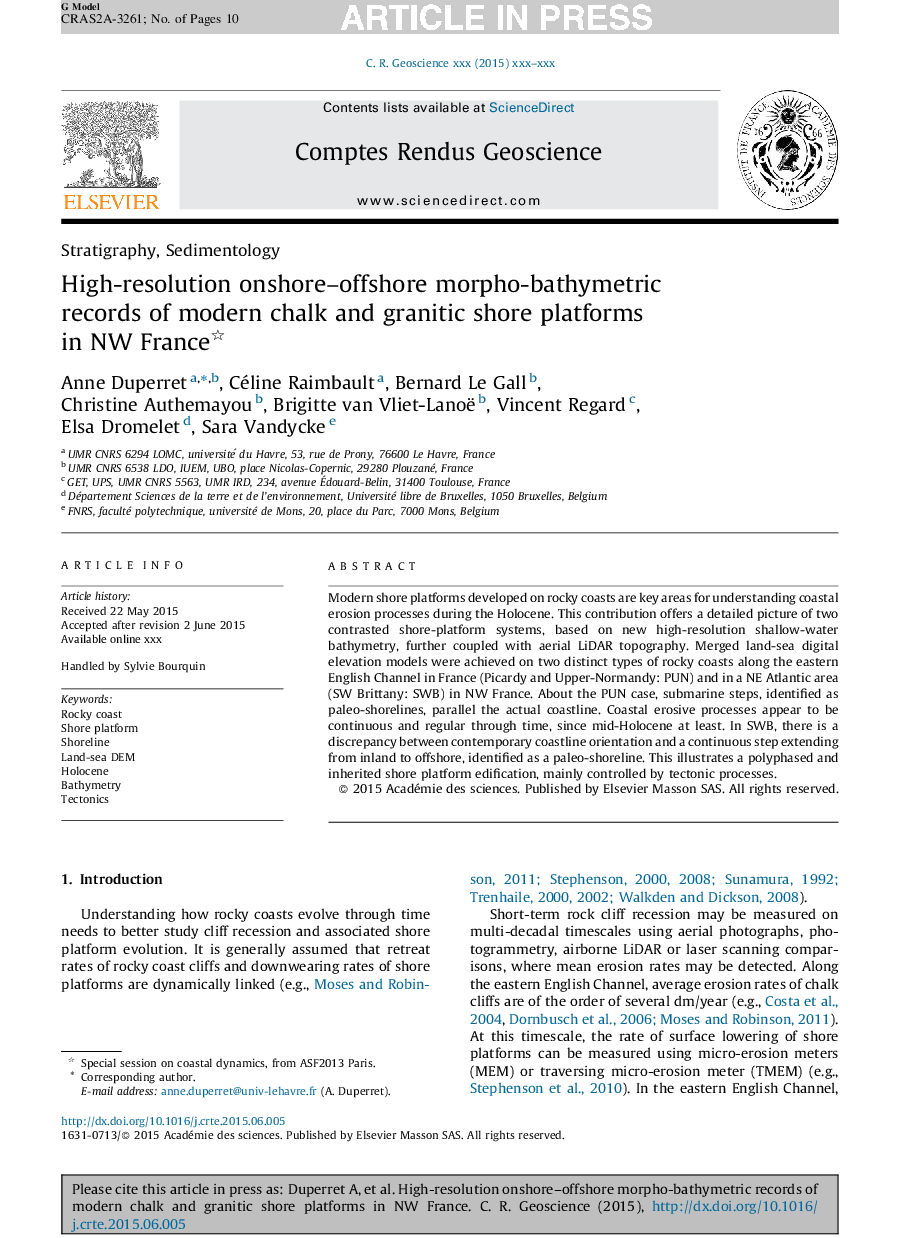| Article ID | Journal | Published Year | Pages | File Type |
|---|---|---|---|---|
| 6347838 | Comptes Rendus Geoscience | 2016 | 10 Pages |
Abstract
Modern shore platforms developed on rocky coasts are key areas for understanding coastal erosion processes during the Holocene. This contribution offers a detailed picture of two contrasted shore-platform systems, based on new high-resolution shallow-water bathymetry, further coupled with aerial LiDAR topography. Merged land-sea digital elevation models were achieved on two distinct types of rocky coasts along the eastern English Channel in France (Picardy and Upper-Normandy: PUN) and in a NE Atlantic area (SW Brittany: SWB) in NW France. About the PUN case, submarine steps, identified as paleo-shorelines, parallel the actual coastline. Coastal erosive processes appear to be continuous and regular through time, since mid-Holocene at least. In SWB, there is a discrepancy between contemporary coastline orientation and a continuous step extending from inland to offshore, identified as a paleo-shoreline. This illustrates a polyphased and inherited shore platform edification, mainly controlled by tectonic processes.
Related Topics
Physical Sciences and Engineering
Earth and Planetary Sciences
Earth and Planetary Sciences (General)
Authors
Anne Duperret, Céline Raimbault, Bernard Le Gall, Christine Authemayou, Brigitte van Vliet-Lanoë, Vincent Regard, Elsa Dromelet, Sara Vandycke,
